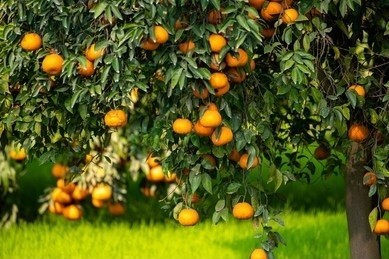Rutaceae Plants Tissue Culture
Rutaceae plants are evergreen or deciduous trees, shrubs, or climbing vines or herbs found throughout the world and have a variety of uses.

- Some plant species of this family are used for both medicinal and food purposes, like spices, and as healthy fruits. The extracted essential oils can be used in plant pest and disease control as well as in the production of different products such as beverages, soaps, foods, fragrances, and cosmetics.
- Some plant species of this family have various pharmacological effects such as regulating blood lipids, increasing gastric secretion, anti-viral, dissolving stones, dilating bronchial tubes, promoting gastrointestinal motility, suppressing cough, activating blood circulation, promoting low red blood cell agglutination, and protecting cardiovascular and cerebral vessels.
- Some plant species of this family are fast-growing and can be cultivated for ornamental purposes or soil and water conservation, and can also be cultivated as fast-growing and productive forest species, as rootstocks for fruit trees, or as breeding material.
Tissue culture service
Some of the Rutaceae plants that we have successfully tissue cultured
| Family |
Genus |
Species |
| Rutaceae |
Zanthoxylum |
Zanthoxylum ailanthoides Sieb. et Zucc
Zanthoxylum piperitum (L.) DC. f. inerme Makino
Zanthoxylum planispinum var. dintanensis
Zanthoxylum dissitum Hemsl.
Zanthoxylum armatum DC.
Zanthoxylum piperitum DC.
Zanthoxylum japonica
Zanthoxylum bungeanum
Zanthoxylum dissitum Hemsl.
Zanthoxylum piperitum De Candolle
Zanthoxylum nitidum (Roxb.) DC. |
| Citrus |
Fortunella crassifolia Swingle
Citrus reticulata
Citrus sinensis
Citrus aurantium L.
Citrus × paradisi Macfad.
Citrus limon
Citrus trifoliata |
| Toddalia |
Toddalia asiatica Lam. |
* The list of species that can be tissue cultured is constantly being updated, so please stay tuned.
Usually, all kinds of plant organs and tissues can be used as explants for plant tissue culture, but the regeneration ability of different explants varies. Therefore, one of the key points in the Rutaceae plant tissue culture technology provided by Lifeasible is to select suitable explants to establish a stable and efficient regeneration system.
In the tissue culture of Rutaceae plants, stem segments, leaves, petioles, immature fruits, seed embryos, stem nodes induced new leaves and stem tips can be used as explants, and stem segments of different Rutaceae plants show better healing induction, so we will prefer stem segments as explants in tissue culture. Based on our rich experience, both the healing tissue induction pathway and the direct organogenesis pathway can be used in the tissue regeneration process of Rutaceae plants.
You want to sign a confidentiality agreement.
You have a specific plant species for your experimental needs.
You have a reliable and relevant cooperation project to discuss.
You are very interested in our project or have any questions.
You need an updated and detailed quotation.
For research or industrial use.



